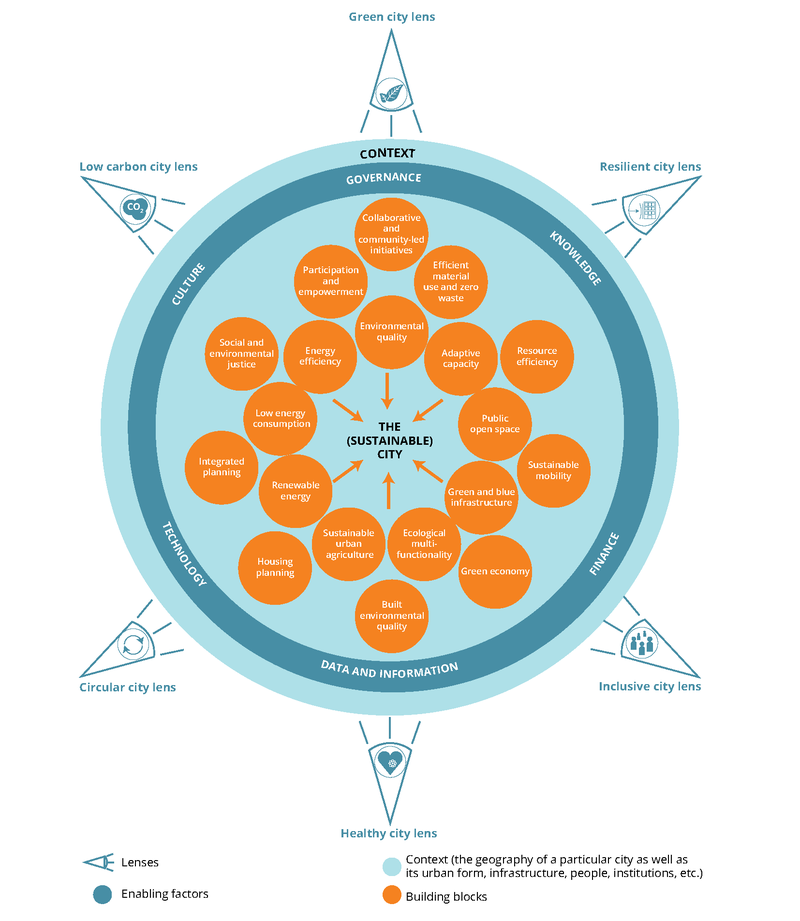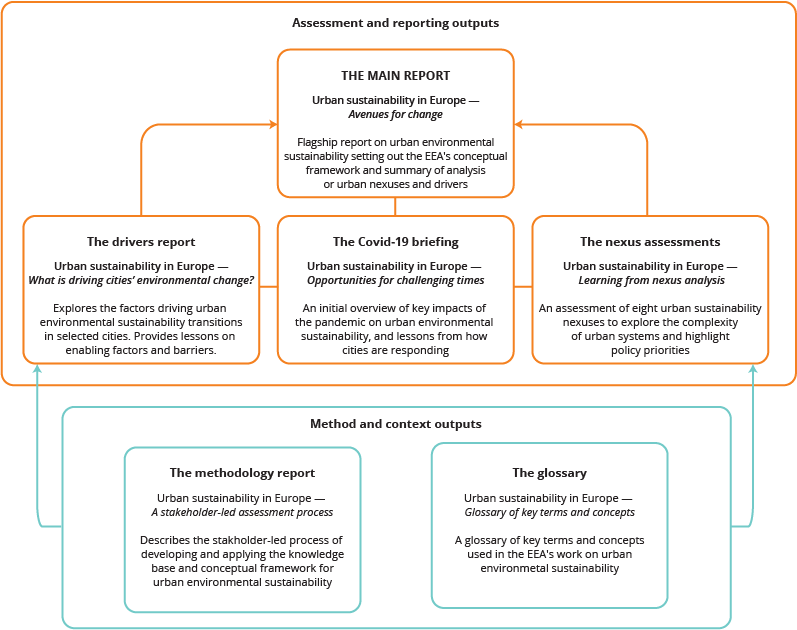All official European Union website addresses are in the europa.eu domain.
See all EU institutions and bodiesUrban environmental sustainability encourages revitalisation and transition of urban areas and cities to improve liveability, promote innovation and reduce environmental impacts while maximising economic and social co-benefits.
Urban systems are inherently complex. With the ample support of urban stakeholders, the EEA developed a conceptual model and selected six observation and analysis lenses to assess the role of cities in urban transitions towards environmental sustainability, within the broad European Green Deal framework and the EU Urban Agenda. Based on the stakeholders-led assessment process several outputs have been co-created.

Overview of EEA outputs on cities’ transitions towards sustainability

Read the assessments
- Urban sustainability in Europe – What is driving environmental change?
- Urban Sustainability in Europe – Opportunities for challenging times
- Urban sustainability in Europe – A stakeholder-led assessment process
- Urban sustainability in Europe – Glossary of key terms and concepts
- Urban sustainability in Europe – Avenues for change
- Urban Sustainability in Europe – Learning from nexus analysis
- Urban sustainability in Europe – Post‑pandemic drivers of environmental transitions
